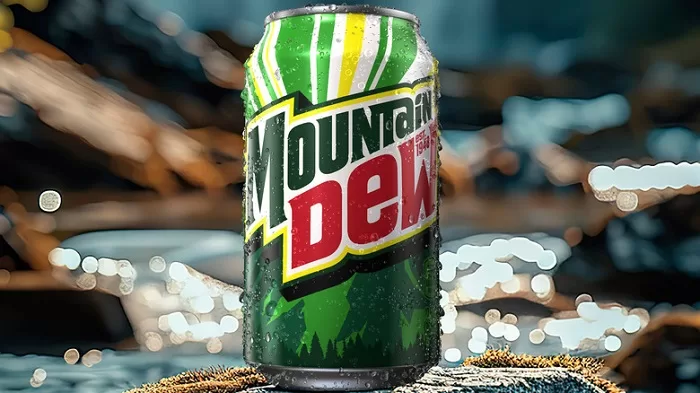Food & Beverage
Mountain Dew’s New Look: Here’s What’s Changing!

- Mountain Dew is reintroducing the word “mountain” in its logo for the first time in nearly 20 years, launching a fresh design emphasising its rustic roots.
- The rebrand aims to attract nostalgic fans and younger consumers amid declining sales and a shift toward healthier beverage options.
- The new identity, featuring softer design elements and outdoor imagery, evokes a sense of refreshment and adventure while reconnecting with the brand’s history.
Mountain Dew, the iconic beverage noted for its brilliant citrus flavour, is about to get a major makeover, including the return of the word “mountain” to its logo for the first time in nearly two decades. PepsiCo announced this new approach as part of its efforts to revitalise the brand in the face of dwindling sales and shifting consumer tastes in North America.
A Fresh Look for A Timeless Brand
The new design includes a logo that honours the brand’s rustic roots while removing the sharp, angular typography instead of a more inviting feel. The redesigned package will hit shop shelves in May 2025, allowing customers to reconnect with a product that has long been associated with adventure and the outdoors.
Mauro Porcini, PepsiCo’s Chief Design Officer, stated that the presence of “Mountain” in the design serves as a direct reminder of the brand’s origins in the Smoky Mountains of Tennessee, where it was founded in 1948. This nostalgic reference is more than just cosmetic; it is part of a larger campaign to appeal to people looking for authenticity and a connection with nature.
The new logo pays reference to 1990s design principles while updating them for a modern audience. It features softer angles, a leafy dot above the “I,” and a vivid mountain backdrop to complement the beverage’s delicious flavour. This new identity intends to inspire a sense of refreshment and outdoor vitality, departing from Mountain Dew’s previous emphasis on energy drink marketing, which has defined the brand for nearly two decades.
Responding to Changing Consumer Trends
PepsiCo’s move to refresh Mountain Dew comes at a time when soda consumption is declining as more people turn to healthier options such as sparkling water and low-sugar beverages. Mountain Dew’s sales volume declined by 7% in the first half of 2024, indicating the need for a strategic shift.
Industry experts, like Duane Stanford of Beverage Digest, understand Mountain Dew’s need to re-establish its position in a saturated beverage industry. With competitors like Poppi and Olipop gaining traction and even developing goods with similar themes, Mountain Dew’s rebranding efforts are critical to attracting both nostalgic followers and new customers.
PepsiCo is also attempting to engage with younger consumers through innovative marketing strategies. This campaign includes the restoration of the old tagline “Do the Dew” as well as the appearance of “The Mountain Dude” mascot, a whimsical character designed to encourage outdoor activities. This strategy attempts to attract not only existing fans but also Gen Z and millennials who want to reconnect with outdoor activities.
The Evolution of Mountain Dew
Mountain Dew’s logo has changed multiple times since its debut, with this latest makeover marking the seventh iteration in its 76-year history. The company’s early emblems reflected its Southern heritage and the more adventurous spirit of its first customers. Today, the company is embracing a design that blends nostalgia and modern sensibilities, with a colour palette that emphasises its relationship to nature.
PepsiCo research shows that the redesigned design is popular with both older and younger consumers. Umi Patel, VP of Consumer Insights at PepsiCo, underlines that the new identity is intended to make Mountain Dew feel more approachable and appealing to a wider audience.
As Mountain Dew prepares to unveil its new appearance, it joins a growing list of businesses looking to their roots for inspiration. Other corporations, such as Pepsi and Burger King, have made similar moves, showing a trend towards adopting retro aesthetics to connect with customers more effectively.

















































